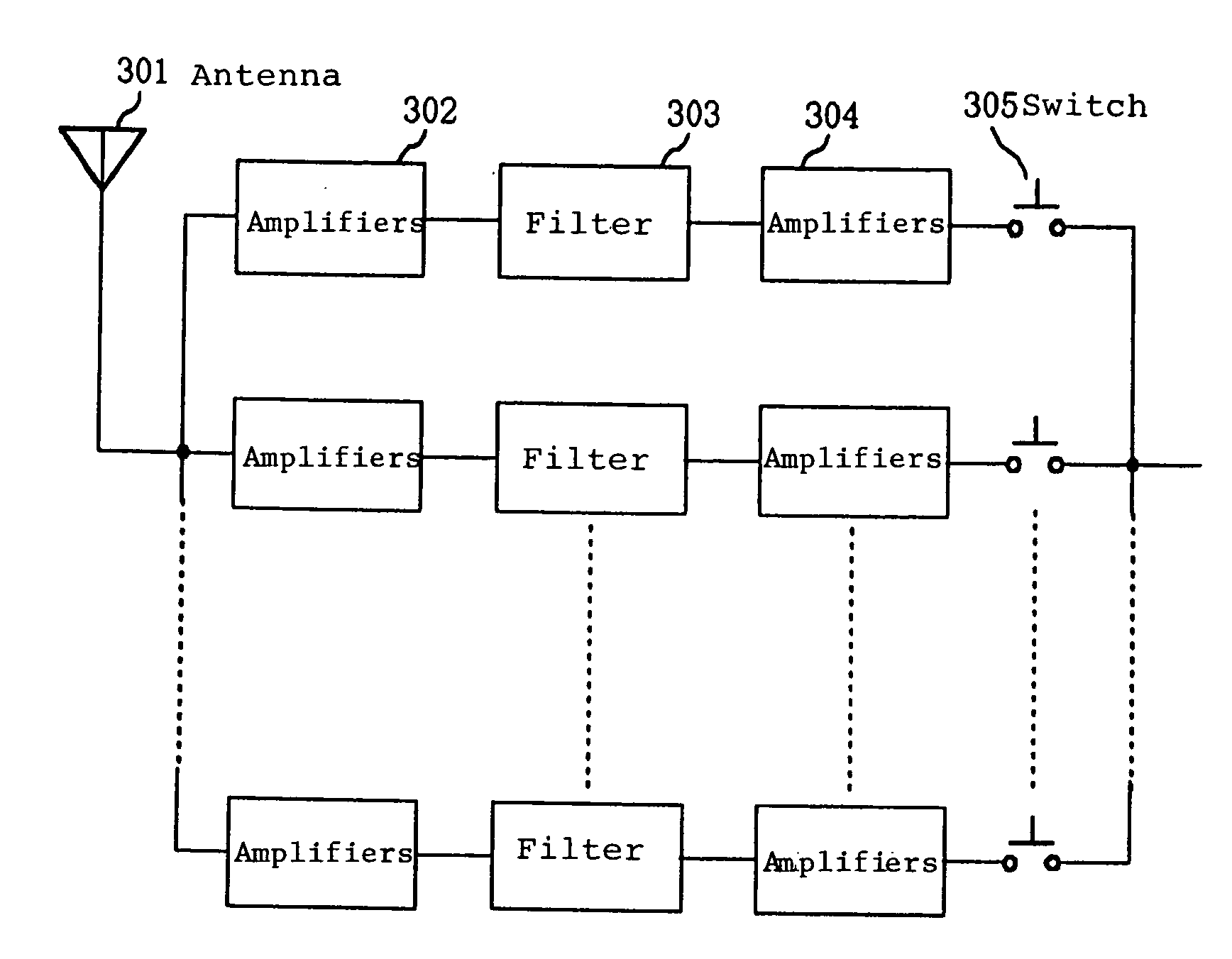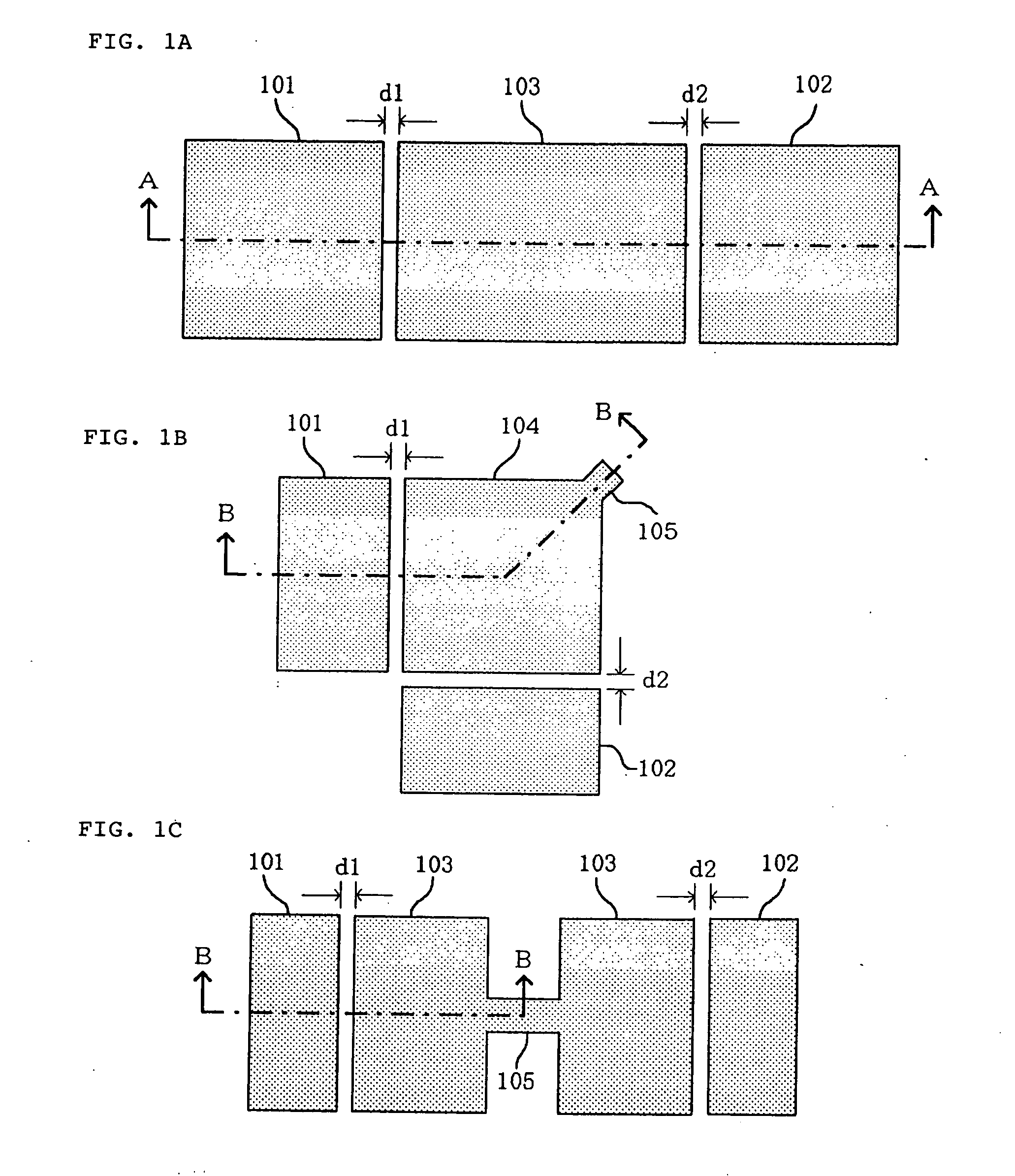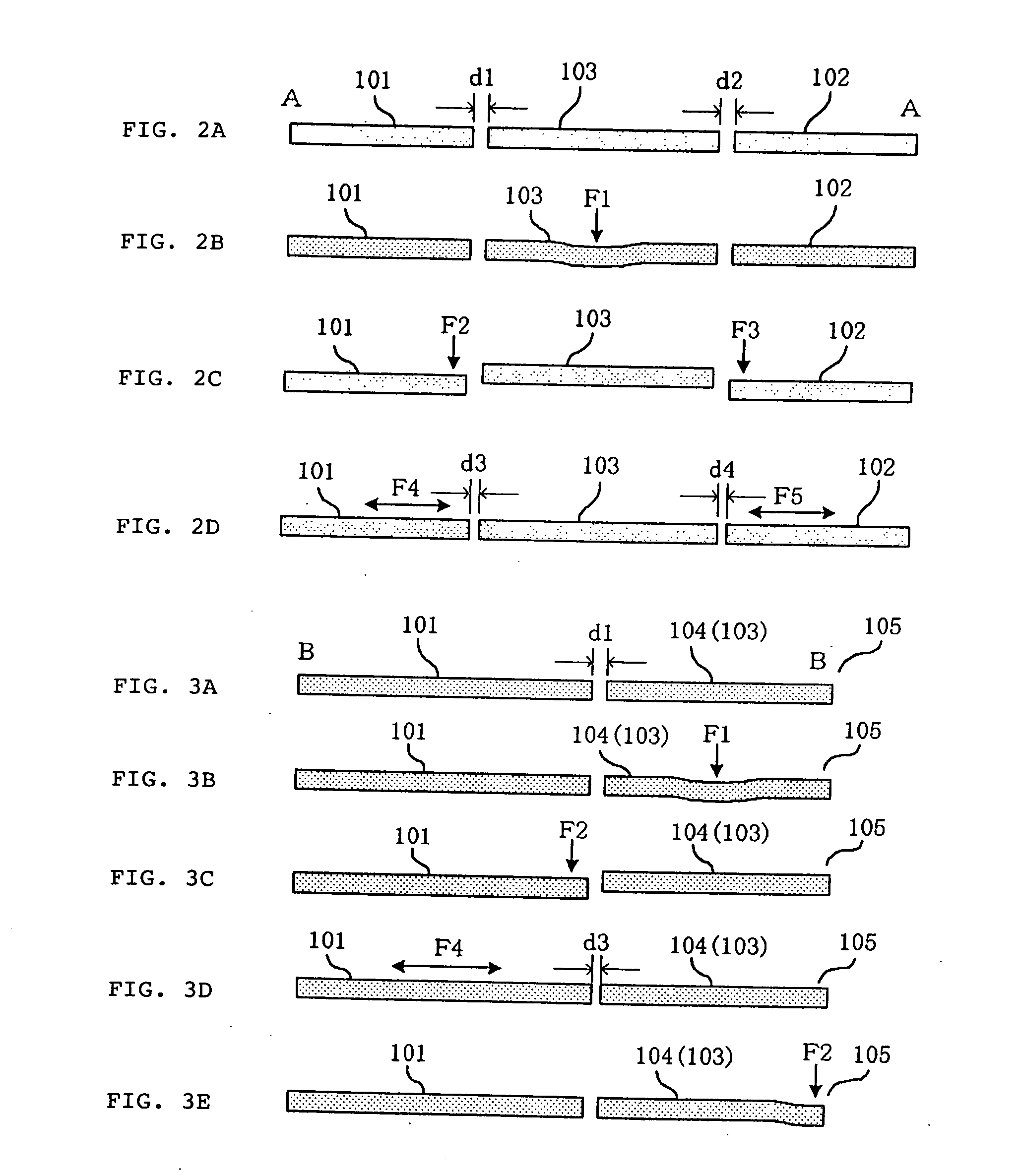Filter and composite filter, filter assembly, integrated circuit chip and electronic device which contain same, and frequency characteristic changing method therefor
a filter and composite technology, applied in the direction of impedence networks, electrical devices, transmission, etc., can solve the problems of difficult to arbitrarily change the bandwidth, difficult to provide a mechanism for varying the center frequency and bandwidth, and the technique described in reference b>1/b> is incapable of adjusting the frequency characteristics by a movable mechanism, etc., to reduce the size of the device, improve reliability, and cost-down
- Summary
- Abstract
- Description
- Claims
- Application Information
AI Technical Summary
Benefits of technology
Problems solved by technology
Method used
Image
Examples
Embodiment Construction
[0135] Next, examples of the present invention will be described in detail with reference to the accompanying drawings.
[0136]FIG. 4 are diagrams illustrating a first example of the present invention, wherein FIG. 4A is a top plan view which additionally depicts the configuration of peripheral circuits; FIG. 4B is a front view, FIG. 4C is a side view, and FIG. 4D is a schematic diagram for describing the operation of an acoustic wave resonator.
[0137] As illustrated in FIG. 4, the filter of this example mainly comprises input electrode 2 and output electrode 3 on substrate 1, and dual-mode acoustic wave resonator 7a disposed therebetween across narrow voids 4, 5 and having the shape of a square except for resonance mode inter-coupler 6, when viewed from above. The vertical and horizontal widths of this dual-mode acoustic wave resonator 7a are chosen to match the length of one waveform when a designed resonance frequency is realized, in consideration of the speed of acoustic waves th...
PUM
 Login to View More
Login to View More Abstract
Description
Claims
Application Information
 Login to View More
Login to View More - R&D
- Intellectual Property
- Life Sciences
- Materials
- Tech Scout
- Unparalleled Data Quality
- Higher Quality Content
- 60% Fewer Hallucinations
Browse by: Latest US Patents, China's latest patents, Technical Efficacy Thesaurus, Application Domain, Technology Topic, Popular Technical Reports.
© 2025 PatSnap. All rights reserved.Legal|Privacy policy|Modern Slavery Act Transparency Statement|Sitemap|About US| Contact US: help@patsnap.com



